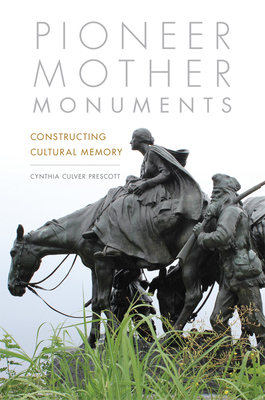
description
3
For more than a century, American communities erected monuments to western pioneers. Although many of these statues receive little attention today, the images they depict--sturdy white men, saintly mothers, and wholesome pioneer families--enshrine prevailing notions of American exceptionalism, race relations, and gender identity. Pioneer Mother Monuments is the first book to delve into the long and complex history of remembering, forgetting, and rediscovering pioneer monuments. In this book, historian Cynthia Culver Prescott combines visual analysis with a close reading of primary-source documents. Examining some two hundred monuments erected in the United States from the late nineteenth century to the present, Prescott begins her survey by focusing on the earliest pioneer statues, which celebrated the strong white men who settled--and conquered--the West. By the 1930s, she explains, when gender roles began shifting, new monuments came forth to honor the Pioneer Mother. The angelic woman in a sunbonnet, armed with a rifle or a Bible as she carried civilization forward--an iconic figure--resonated particularly with Mormon audiences. While interest in these traditional monuments began to wane in the postwar period, according to Prescott, a new wave of pioneer monuments emerged in smaller communities during the late twentieth century. Inspired by rural nostalgia, these statues helped promote heritage tourism. In recent years, Americans have engaged in heated debates about Confederate Civil War monuments and their implicit racism. Should these statues be removed or reinterpreted? Far less attention, however, has been paid to pioneer monuments, which, Prescott argues, also enshrine white cultural superiority--as well as gender stereotypes. Only a few western communities have reexamined these values and erected statues with more inclusive imagery. Blending western history, visual culture, and memory studies, Prescott's pathbreaking analysis is enhanced by a rich selection of color and black-and-white photographs depicting the statues along with detailed maps that chronologically chart the emergence of pioneer monuments.
For more than a century, American communities erected monuments to western pioneers. Although many of these statues receive little attention today, the images they depict--sturdy white men, saintly mothers, and wholesome pioneer families--enshrine prevailing notions of American exceptionalism, race relations, and gender identity. Pioneer Mother Monuments is the first book to delve into the long and complex history of remembering, forgetting, and rediscovering pioneer monuments. In this book, historian Cynthia Culver Prescott combines visual analysis with a close reading of primary-source documents. Examining some two hundred monuments erected in the United States from the late nineteenth century to the present, Prescott begins her survey by focusing on the earliest pioneer statues, which celebrated the strong white men who settled--and conquered--the West. By the 1930s, she explains, when gender roles began shifting, new monuments came forth to honor the Pioneer Mother. The angelic woman in a sunbonnet, armed with a rifle or a Bible as she carried civilization forward--an iconic figure--resonated particularly with Mormon audiences. While interest in these traditional monuments began to wane in the postwar period, according to Prescott, a new wave of pioneer monuments emerged in smaller communities during the late twentieth century. Inspired by rural nostalgia, these statues helped promote heritage tourism. In recent years, Americans have engaged in heated debates about Confederate Civil War monuments and their implicit racism. Should these statues be removed or reinterpreted? Far less attention, however, has been paid to pioneer monuments, which, Prescott argues, also enshrine white cultural superiority--as well as gender stereotypes. Only a few western communities have reexamined these values and erected statues with more inclusive imagery. Blending western history, visual culture, and memory studies, Prescott's pathbreaking analysis is enhanced by a rich selection of color and black-and-white photographs depicting the statues along with detailed maps that chronologically chart the emergence of pioneer monuments.
member goods

Steel Tree Sculpture
These are unique pieces by the artist. They can be modified in size and tailored to specific ...
$110.00
Abstract Steel Sculpture
These are unique pieces by the artist. They can be modified in size and tailored to specific ...
$225.00
Metal Abstract Sculpture
These are unique pieces by the artist. They can be modified in size and tailored to specific ...
$150.00Return Policy
All sales are final
Shipping
No special shipping considerations available.
Shipping fees determined at checkout.







